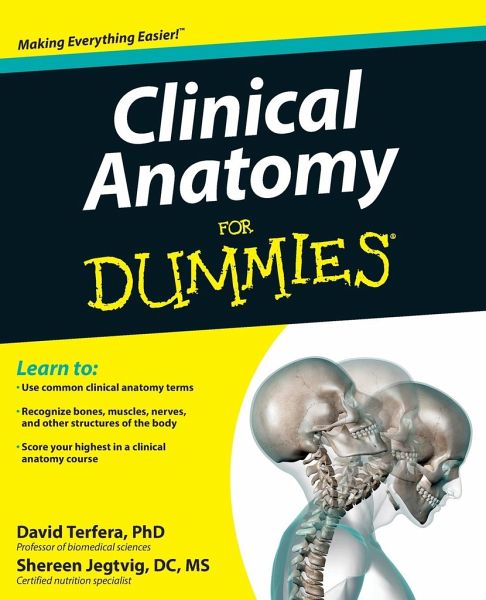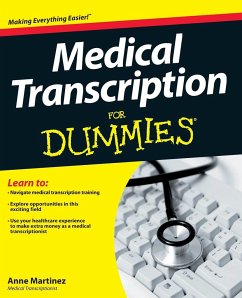
Clinical Anatomy for Dummies
Versandkostenfrei!
Versandfertig in über 4 Wochen
25,99 €
inkl. MwSt.
Weitere Ausgaben:

PAYBACK Punkte
13 °P sammeln!
Learn to: * Use common clinical anatomy terms * Recognize bones, muscles, nerves, and other structures of the body * Score your highest in a clinical anatomy course Your ticket to acing a clinical anatomy course Need help with your college-level clinical anatomy course? This book presents a friendly, unintimidating overview of the material you're studying, including clinical anatomy terms, the systems of the body, and various structures of the thorax, abdomen, pelvis, head, neck, back, and limbs. Clear definitions, concise explanations, and plenty of illustrations will help you make the grade!...
Learn to: * Use common clinical anatomy terms * Recognize bones, muscles, nerves, and other structures of the body * Score your highest in a clinical anatomy course Your ticket to acing a clinical anatomy course Need help with your college-level clinical anatomy course? This book presents a friendly, unintimidating overview of the material you're studying, including clinical anatomy terms, the systems of the body, and various structures of the thorax, abdomen, pelvis, head, neck, back, and limbs. Clear definitions, concise explanations, and plenty of illustrations will help you make the grade! * Clinical Anatomy 101 -- get the skinny on how clinical anatomy compares to other types of anatomical study and make sense of the vocabulary used in clinical anatomy * All systems go -- discover how to organize the body into different systems, including the musculoskeletal, nervous, cardiovascular, and digestive systems * Get under your skin -- find out everything you need to know about the three regions that comprise the trunk -- the thorax, the abdomen, and the pelvis * Get a "head" of the class -- understand the ins and outs of what"s going on in your head, neck, and back * Go to extremes -- understand the structures and movements of the upper and lower extremities Open the book and find: * Plain-English explanations of terms used in clinical anatomy * The makeup of various systems of the body * Details about the thorax, the abdomen, and the pelvis * Structures in the head, the neck, and the back * Parts of the upper and lower limbs * Ten useful clinical anatomy mnemonics * 16 pages of full-color illustrations














